China and Serbia share a profound friendship that has withstood the test of time and adversity. In Serbia, significant projects involving Chinese state-owned enterprises are revitalizing the Serbian economy and improving the quality of life for local residents. These projects include the rejuvenation of a steel plant and the Hungary-Serbia Railway, as well as the Friendship Bridge and Road along the Danube River. These efforts not only validate but also advance the strong friendship between China and Serbia.
Revival of the Century-Old Steel Plant
In the development of the relations between China and Serbia, the story of the revival of the Smederevo Steel Plant in Serbia has become a tale illustrating their strong bond.
The Smederevo Steel Plant in Serbia, the largest steel producer in the country, faced operational difficulties and long-term losses in the 1990s. With the impetus of the Belt and Road Initiative, China's Hebei Iron and Steel Group Co., Ltd. (HBIS) acquired the Smederevo Steel Plant in April 2016. HBIS Serbia became a landmark project in China-Serbia Belt and Road cooperation.
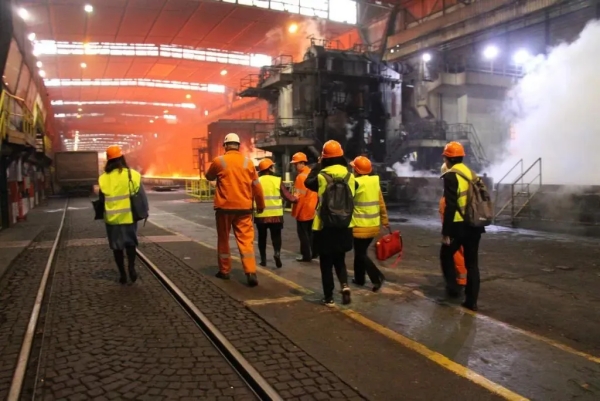
Chinese personnel from HBIS Serbia inspect the Smederevo Steel Plant on December 4, 2018. [Photo/sasac.gov.cn]
In recent years, newly constructed projects and facilities have strengthened the competitiveness of the steel plant.
To address the problem of environmental pollution, HBIS adopted advanced Chinese technology and built a sintering plant in 2022 that can reutilize all the dust generated during the sintering process, eliminating secondary pollution.
Additionally, the equipment in the hot rolling mill production workshop was updated, allowing the steel plant to achieve automated management. Technicians monitor and control the production process, improving safety and production efficiency.
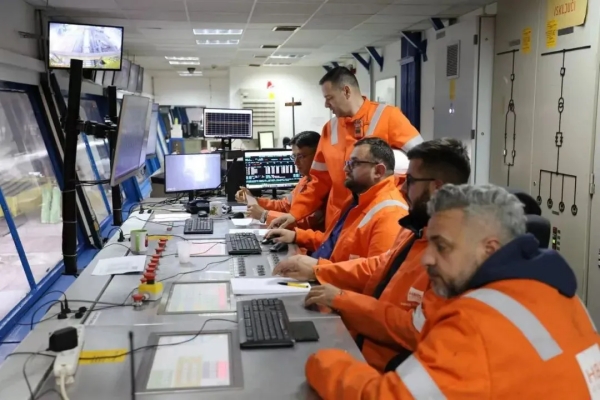
Serbian employees work in the control room of the hot rolling mill at the steel plant. [Photo/sasac.gov.cn]
HBIS Serbia has embraced the concept of green development over the past eight years. In 2023, the average dust emission of HBIS Serbia was 36.3 milligrams per cubic meter, lower than the European Union's standard of 40 milligrams per cubic meter, and the environmental indicators within the plant were better than those in Smederevo city.
With the successful operation of equipment such as the sintering machine, heating furnace, and gas cabinet, HBIS Serbia has entered the fast lane of green development. At the same time, it has also focused on uplifting the local community, including equipping a local primary school with meal delivery trucks.
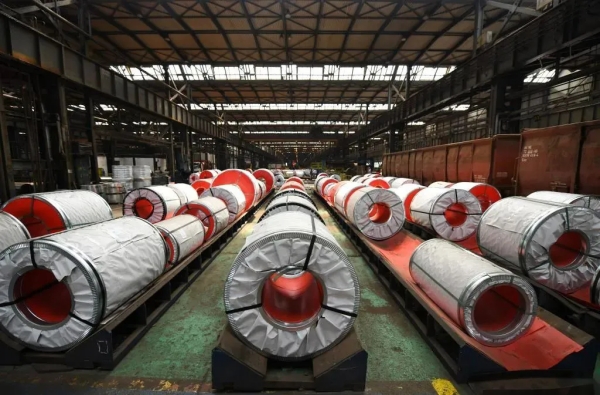
The steel coils at the HBIS Serbia Smederevo Steel Plant are taken on May 5, 2023. [Photo/sasac.gov.cn]
Change of Bor's Copper Mine
Bor, in eastern Serbia, is a typical resource-based city that has seen tremendous growth since copper mining began in 1903. However, due to antiquated technology and equipment, the mine was on the verge of bankruptcy and leaving behind environmental hazards.
Zijin Mining Group Co., Ltd signed a strategic cooperation agreement with the Serbian government to address the environmental problems in Bor City, in December 2018. The environmental management project for the Bor River by Zijin Mining Serbia commenced in February 2021, marking a new chapter in the green transformation of Bor’s mines.
The project involves constructing a reservoir to collect and reuse municipal wastewater, redirecting water from the Krivelj River to the Bor River, and building a new clean water reservoir on the Bor River. This initiative aims to create a leisure area for the residents of Bor and nearby villages, laying the foundation for establishing Bor as an ecological model city.
Zijin Mining Group created a "garden-style mine" by adopting solar and wind power, restoring ecological vegetation, and implementing greening and reclamation efforts. A total of 99 individual devices, three power modules, six network communication cabinets, and associated network cables were supplied by Xuji Electric Co., Ltd, a subsidiary of China Electric Equipment Group Co., Ltd.
The project took measures to manage dust, solid waste, wastewater, and exhaust gases. This not only improved environmental quality but also enhanced the living conditions of local residents.
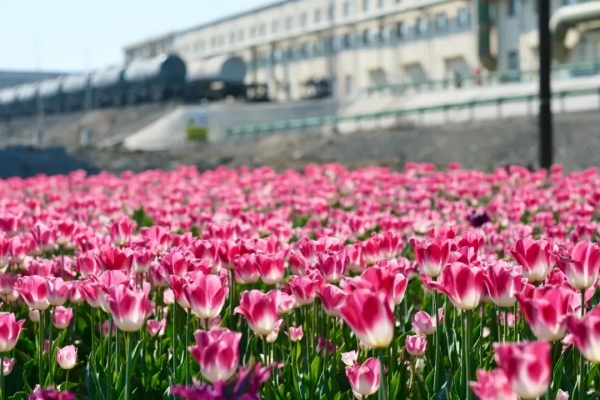
Tulips are in full bloom at Zijin Mining's Bor City Copper operation in Serbia on April 11, 2024. [Photo/sasac.gov.cn]
The Friendship Road
In Novi Sad, Serbia, track-laying machines are placing concrete rails as part of the construction of the Novi Sad to Subotica section of the Hungary-Serbia Railway.
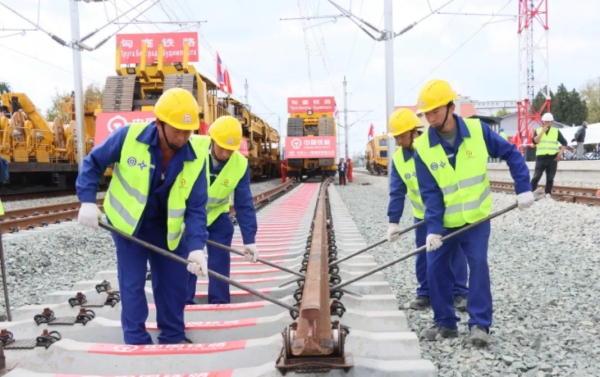
The track-laying on the Novi Sad to Subotica section of the Hungary-Serbia Railway is completed. [Photo/sasac.gov.cn]
Built by Chinese state-owned enterprises like China Railway Group Limited, China Railway Construction Corporation Limited and China Communications Construction Company Limited (CCCC), the Hungary-Serbia Railway is a dual-track electrified high-speed railway for both passengers and freight. Stretching approximately 341.7 kilometers from Belgrade, Serbia, to Budapest, Hungary, the railway will increase maximum train speeds from 40 km/h to 200 km/h.
As of March 2022, the section from Belgrade to Novi Sad is operational, reducing travel time to just over 30 minutes and bringing high-speed rail to Serbia. This segment has transported over seven million passengers, improving the quality of life for many local residents.
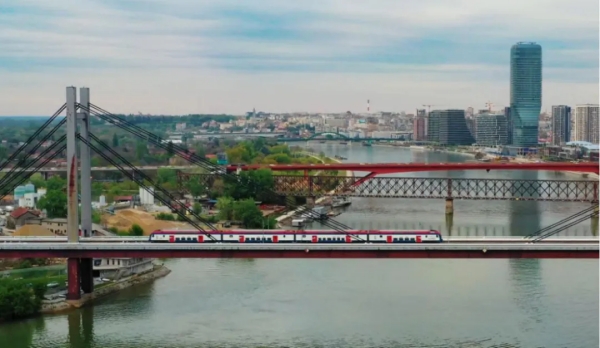
Hungary-Serbia Railway Project in Serbia [Photo/sasac.gov.cn]
The construction and operation of the Hungary-Serbia Railway demonstrate China's high-speed rail technology and strengthen economic cooperation between China and Central and Eastern European countries. Once operational, the railway will reduce travel time between Belgrade and Budapest from eight hours to three hours, enhancing convenience for travelers and boosting regional economic development.
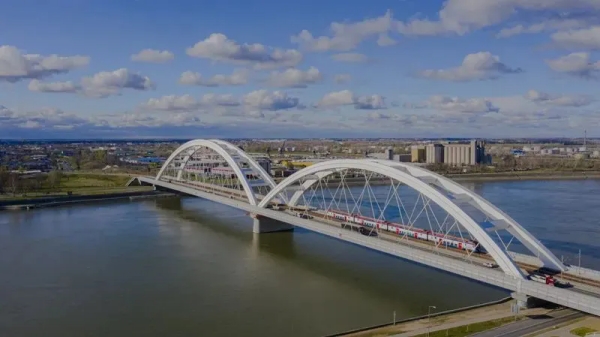
A train runs on the Novi Sad section of the Hungary-Serbia Railway, crossing the Danube River bridge. [Photo/sasac.gov.cn]
Before 2014, Belgrade had only one bridge over the Danube River. The Zemun-Borča Bridge, built by China Road and Bridge Corporation, spans 1,482 meters and was completed at the end of 2014. It opened to traffic in late 2015, reducing travel time from Belgrade's city center to Borča from 1 hour to 10 minutes.
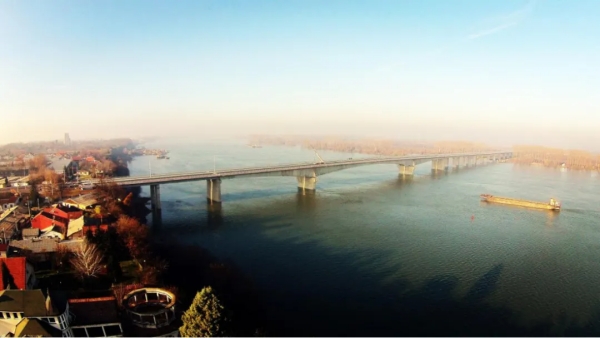
The Zemun-Borča Bridge and connecting lines are constructed by CCCC. [Photo/sasac.gov.cn]
This bridge was the first built by Chinese companies in Europe, ending Belgrade's 70-year reliance on a single Danube bridge and establishing a strong presence for Chinese construction companies in the European market.
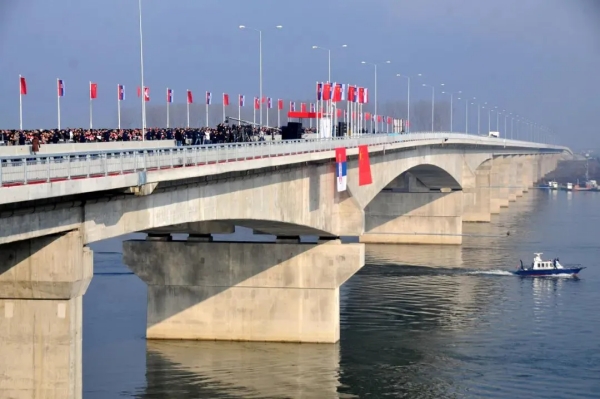
The completion and opening ceremony of the Zemun-Borča Bridge is held in Belgrade, Serbia on December 18, 2014. [Photo/sasac.gov.cn]
The E763 Highway project is the first highway in Europe undertaken by a Chinese company. The total length is approximately 300 kilometers, with CCCC responsible for four sections. The New Belgrade-Surčin and Surčin-Obrenovac sections are already operational. In northern Serbia, China Road and Bridge Corporation is constructing the Novi Sad-Ruma Expressway. This project is about 47.7 kilometers long and includes a 3.5-kilometer tunnel, which will be the longest tunnel in Serbia.
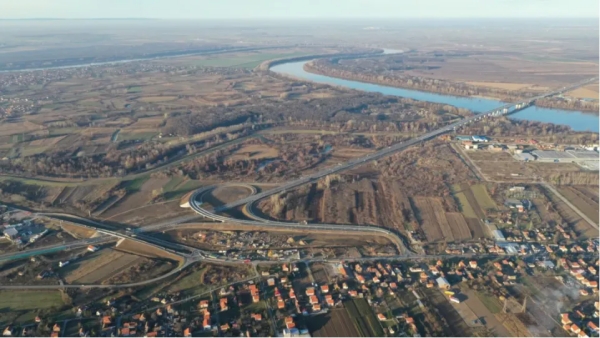
E763 Highway project constructed by CCCC. [Photo/sasac.gov.cn]
China State Construction Engineering Corporation is involved in the Bački Breg-Sebska Crnja Highway project, which connects the east and west of northern Serbia. This project is significant for promoting trade between the eastern and western parts of northern Serbia.
During the construction of the Hungary-Serbia Railway in Serbia, Chinese companies assisted local governments in building auxiliary roads and municipal pathways, conducted technical exchange training, and provided employment opportunities.
During the construction of the Zemun-Borča Bridge, China Road and Bridge Corporation offered technical training. This not only contributed to the bridge's construction and prepared talent for future Chinese projects in Serbia but also trained a large number of construction professionals in Serbia.
Economic and Cultural Communication
The Eurasia Trade Center project was launched in May 2022, with construction managed by the China Construction Eighth Engineering Division Corp., Ltd, a subsidiary of China State Construction Engineering Corporation.
The Eurasia Trade Center project consists of two above-ground buildings with a total construction area of approximately 34,700 square meters. It includes over 470 shops and 430 above-ground parking spaces, marking one of the first achievements following the signing of the free trade agreement between China and Serbia.
The Eurasia Trade Center will become the largest and only modern Chinese mall in Serbia once completed. It will play a role in promoting economic and cultural exchange between China and Serbia and strengthening the friendship between the two countries.
The China-Europe Land-Sea Express is a vital corridor connecting the Far East to Europe, integrating the "21st Century Maritime Silk Road" with the "Silk Road Economic Belt."
After sea freight containers arrive in the Mediterranean region, they can be transferred to rail. Through the China-Europe Land-Sea Express, goods can reach European countries, providing a convenient and low-cost logistics solution for Chinese exports to the European hinterland.
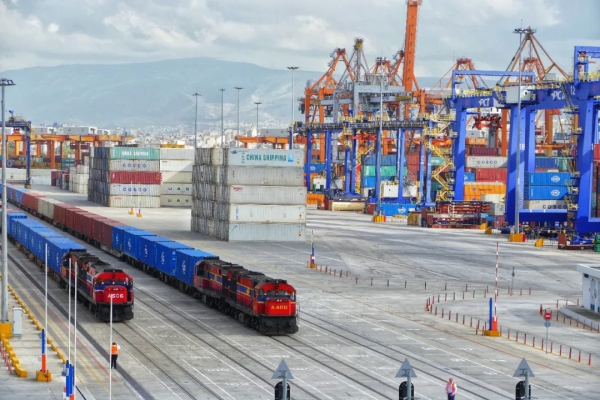
The main route of the China-Europe Land-Sea Express from Piraeus Port, where sea freight can be transferred to rail and transported to Serbia. [Photo/sasac.gov.cn]
In 2014, China COSCO SHIPPING Corporation Limited (COSCO) established a major logistics route extending from the Mediterranean to the Central and Eastern European hinterland, with Piraeus Port as a pivotal point. This route, after reaching Piraeus Port by sea, can connect via rail to multiple stations in North Macedonia, Bulgaria, Serbia, Hungary, Slovakia, the Czech Republic, and Austria. Subsequently, additional routes were developed, including the Rijeka Corridor (Rijeka-Budapest, Belgrade), the Spain Corridor (Valencia-Madrid to Portugal), and the Italy Corridor (Trieste-Budapest).
In October 2022, COSCO added a direct route from Piraeus Port to Niš in Serbia. This new service starts from Piraeus, reaching Niš first and then continuing north to Belgrade.
In recent years, economic and trade interactions between China and Serbia have become more frequent, especially in the field of cultural communication.
The China-Serbia Relationship Square in Belgrade, Serbia's capital, houses the Chinese Cultural Center, a symbol of the two countries' strong and enduring relationship. It shares wonderful stories of cultural exchange and mutual learning. Completed in December 2020, this is the first Chinese Cultural Center in the Western Balkans.
The Belgrade Chinese Cultural Center, which was co-built by CSCEC, has classrooms, cultural exhibition areas, a library, and a tourism marketing hall. It offers lessons in Chinese language, traditional instruments, calligraphy, and Tai Chi, providing a convenient opportunity for Serbians to learn about and experience Chinese culture.
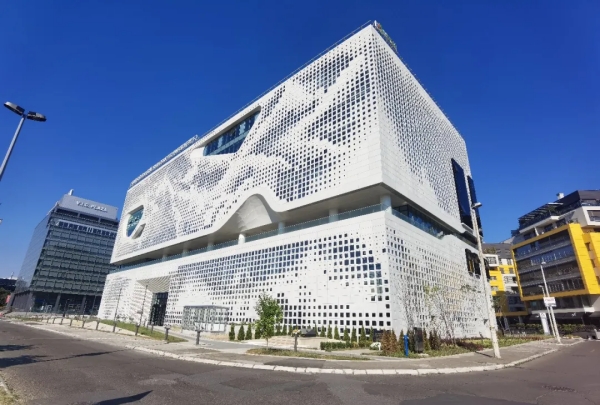
The Chinese Cultural Center at the China-Serbia Friendship Square in Belgrade, Serbia. [Photo/sasac.gov.cn]
Walking through the streets of Serbia today, you can see Chinese signs on street nameplates, Confucius Street outside the Chinese Cultural Center, and the China-Serbia Friendship Square.
(Executive editor: Zhu Zeya)